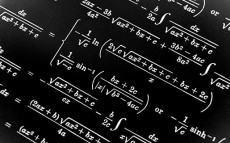- pathfindersAI
- Job Profile
Statistical Assistants
Summary
Statistical Assistants: Navigating the Data-Driven Era
What They Do
In the contemporary data-driven environment, Statistical Assistants play an integral role in transforming raw data into meaningful insights. A Statistical Assistant provides essential support to statisticians and data scientists by collecting, analyzing, and interpreting data. They are the unsung heroes behind many informed decisions made in business, healthcare, government, and various other sectors. Their meticulous approach to data ensures that decisions are based on solid statistical evidence, thereby playing a pivotal role in shaping policies, strategies, and innovations.
Job Responsibilities
Statistical Assistants undertake a range of responsibilities that require a detail-oriented and systematic approach. They collect data using various methods such as surveys, experiments, or reviewing existing records. Once the data is collected, they clean and preprocess it to ensure accuracy, removing any anomalies that could skew results. They employ statistical software like SPSS, SAS, or R to perform data analyses and generate reports, graphs, and tables that present findings visually and comprehensively. Furthermore, they often collaborate with statisticians to design experiments or surveys, ensuring that the methodology aligns with research objectives. In a nutshell, their role is crucial in maintaining data integrity and ensuring that statistical analyses are accurate and reliable.
Essential Skills
A career as a Statistical Assistant demands a blend of technical and soft skills. Proficiency in statistical software and tools is paramount, as the bulk of their work revolves around data analysis. They should have a strong foundation in mathematics and statistics, enabling them to understand complex data sets and draw meaningful conclusions. Attention to detail is another critical skill, as even a minor error can significantly impact data interpretation and subsequent decisions. Moreover, effective communication skills are essential, as they must present complex data in a manner that is understandable to non-technical stakeholders. Problem-solving skills and a penchant for critical thinking are also invaluable, allowing them to navigate challenges and anomalies in data collection and analysis.
Educational Pathways
To embark on a career as a Statistical Assistant, one typically requires at least an associate or bachelor’s degree in statistics, mathematics, or a related field. Courses that develop a deep understanding of statistical theories, probability, and data analysis techniques are fundamental. Practical experience with statistical software and programming languages is also beneficial and is often acquired through internships or project work. Additionally, gaining certifications in specific software or methodologies can enhance a candidate's employability. Continuous learning is critical in this field, given the rapid advancements in data analysis tools and techniques, which necessitate a commitment to ongoing professional development.
Career Prospects
The demand for Statistical Assistants is projected to remain robust, driven by the increasing reliance on data across various industries. They may find employment in governmental agencies, healthcare institutions, educational organizations, and private corporations, among others. As they gain experience and enhance their skill set, opportunities for advancement abound. They can move into roles such as Data Analyst, Statistician, or Data Scientist, often commanding higher salaries and greater responsibilities. The skills and experience gained in this role also offer a strong foundation for specialized fields such as biostatistics, econometrics, and market research.
Conclusion
The role of a Statistical Assistant is both challenging and rewarding, offering a unique blend of technical expertise and analytical prowess. This career path is ideal for individuals who possess a keen eye for detail, a robust understanding of statistical methods, and a passion for uncovering insights from data. As the world continues to prioritize data-driven decision-making, the importance of Statistical Assistants will only grow. For those with the right skills and educational background, this field offers a promising and dynamic career with numerous opportunities for growth and specialization.
Video
Compensation
| State | Median Salary | Median Hourly | Positions |
|---|---|---|---|
| CA | 74,140 | 35.64 | 290 |
| CT | * | * | 50 |
| FL | 38,780 | 18.64 | 150 |
| IL | 49,130 | 23.62 | 100 |
| IN | 40,410 | 19.43 | 500 |
| IA | 80,950 | 38.92 | 150 |
| ME | 46,940 | 22.57 | 60 |
| MD | 56,030 | 26.94 | 120 |
| MA | 65,040 | 31.27 | 240 |
| MI | 45,760 | 22.00 | 850 |
| MO | 60,570 | 29.12 | 140 |
| NE | 56,830 | 27.32 | 210 |
| NJ | 75,400 | 36.25 | 210 |
| NY | 61,120 | 29.38 | 700 |
| OH | 68,060 | 32.72 | 70 |
| OK | 50,170 | 24.12 | 40 |
| PA | 47,230 | 22.71 | 350 |
| SC | 40,440 | 19.44 | 80 |
| TN | 50,590 | 24.32 | 1,290 |
| TX | 60,430 | 29.05 | 50 |
| UT | 48,960 | 23.54 | 60 |
| VA | 50,960 | 24.50 | 30 |
| WA | 41,400 | 19.90 | 380 |
| WI | * | * | 70 |
Similar Occupations
In this area you will find other occupations that are close to the one you were viewing in tasks, knowledge and work environment. If the primary job profile you are viewing isn't quite to your liking, take a look around and see what else is available.
Basic and Premium Accounts have more alternative occupations available than the Free account.

Bioinformatics Technicians - 15-2099.01
A Bioinformatics Technician applies computational tools and techniques to analyze biological data, such as genetic codes and protein sequences, to support scientific research and development. They manage databases, interpret complex datasets, and create visualizations to assist biologists in understanding molecular and genetic information.
-
$70,620/yr
Median Pay -
4,320
Number of Jobs

Bookkeeping, Accounting, and Auditing Clerks - 43-3031.00
Bookkeeping, Accounting, and Auditing Clerks manage financial records, ensuring accuracy and compliance by recording transactions, balancing ledgers, and producing financial statements. They play a critical role in maintaining the fiscal health of an organization by verifying invoices, managing payroll, and preparing detailed financial reports.
-
$47,440/yr
Median Pay -
1,501,910
Number of Jobs